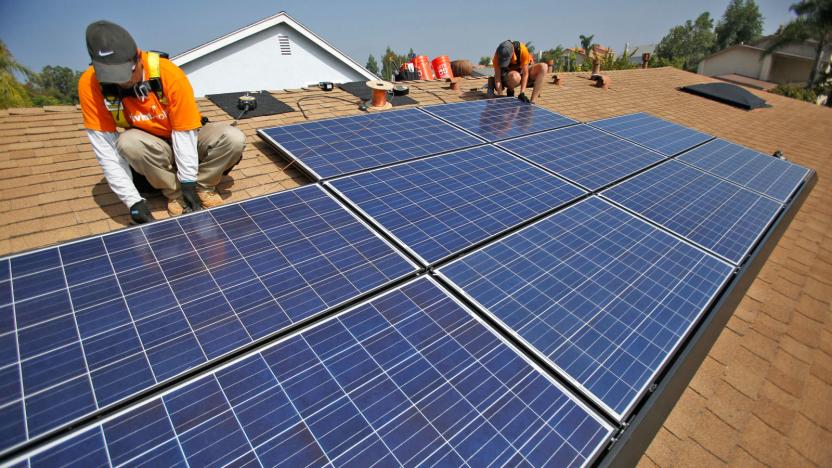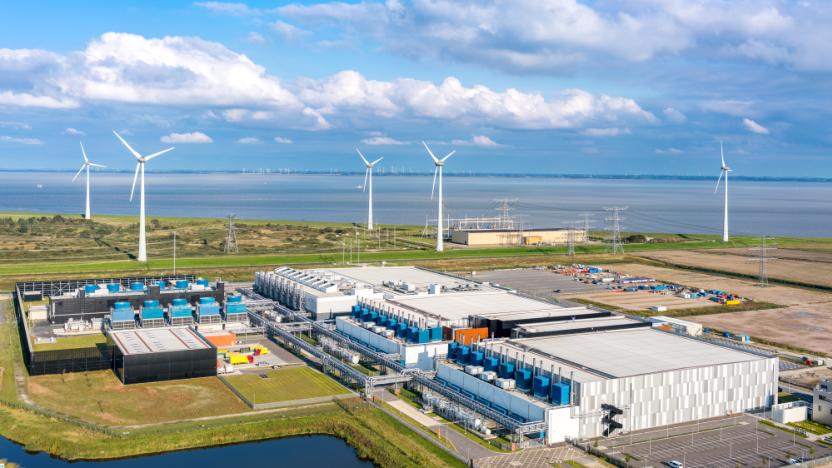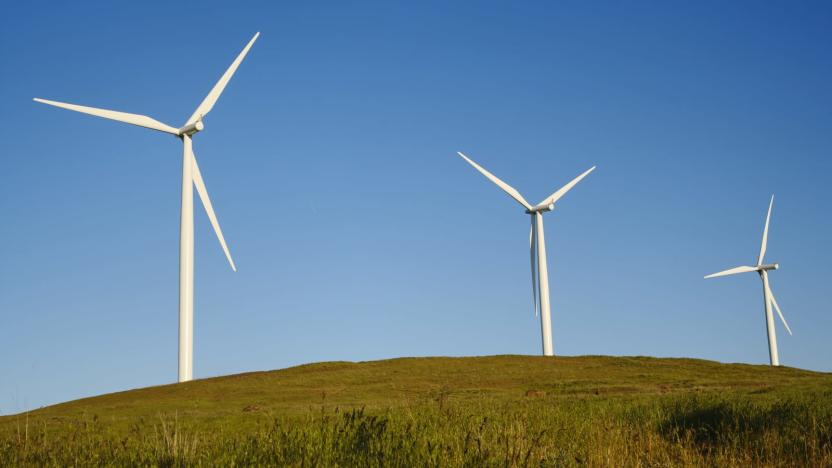TL18SOLR
Latest

Liquid metal battery could lower cost of storing renewable energy
As dreamy as it might be to combine renewable energy sources with storage batteries, there's a problem: those batteries are expensive. It might take you years to recoup the costs. You'll be glad to hear, then, that Stanford scientists have a way to make those batteries more cost-effective. They've developed a liquid metal-based flow battery that can store electricity at a lower price, even on a large scale. A metal-producing mix of sodium and potassium serves as the negative side of the battery, providing nearly twice the maximum voltage of typical flow batteries (making them high-value) without having to resort to exotic chemicals or extreme temperatures.

Investment in renewable energy drops as fossil fuel use rises
Global investment in renewable energy is on the decline, according to the International Energy Agency (IEA). The energy watchdog says there's a significant contradiction between the statements governments make regarding their attitudes to renewables, and the tangible action being taken. Investment fell by seven percent to $318bn last year.

Regulation has helped, not hindered California’s green economy
Earlier this year, California raked in $2.7 trillion gross state product, overtaking the UK as the world's fifth largest economy -- only Germany, Japan, China and the US itself produce more annually. It isn't just our lush farming regions or the technological wonders coming out of Silicon Valley that have made California an economic bellwether, the state's strict adherence to environmental regulations, which go far and above what the rest of the nation demands, have certainly helped as well.

California to require solar panels on most new homes
There's no question that solar power is entering the mainstream, but California is about to give it a giant boost. The state's Energy Commission is expected to approve new energy standards that would require solar panels on the roofs of nearly all new homes, condos and apartment buildings from 2020 onward. There will be exemptions for homes that either can't fit solar panels or would be blocked by taller buildings or trees, but you'll otherwise have to go green if your property is brand new.

Google uses wind and solar to offset all of its operational energy use
In late 2016, Google announced that it expected to offset all of its office and data center electricity use with 100 percent renewable energy in 2017. Today, the company says it achieved that goal. Google has been working on reducing its carbon footprint and purchasing more renewable energy for some time. In 2007, it committed to being carbon neutral, which it did by purchasing solar and wind energy as well as carbon offsets, and throughout the years, it has reduced its reliance on offsets and purchased greater amounts of renewable energy. In 2017, for every kilowatt-hour of energy Google's operations consumed, it added a kilowatt-hour of solar and wind energy to the grid.

Trump reportedly seeks massive budget cuts to clean energy research
The Trump administration has made it very clear that it is pro fossil fuels and has little interest in pushing programs the promote renewable energy. Now, the Washington Post reports that the president's proposed 2019 budget slashes funds for Energy Department programs focused on energy efficiency. While the proposal is just a jumping off point, the fact that it seeks to cut such funding by 72 percent underscores where the administration's interests lie and in which direction its policies will continue to go.

The state of solar installers after Trump’s tariff
Two days after President Donald Trump signed hefty tariffs on imported solar panels, a five-man team was hauling slabs of them up the outside of a brownstone in Brooklyn's Sunset Park. In below-freezing January winds, they set up steel tilt racks on the roof to hold 16 panels and wired the system to a solar inverter, making the power usable in the house and able to feed back into the electrical grid. The team from Brooklyn SolarWorks, an installation company with 21 full-time employees, finished the job around sunset.

Renewable energy may be cheaper than fossil fuels by 2020
Electricity from renewable sources will soon be cheaper than power from most fossil fuels, according to the International Renewable Energy Agency (IRENA). In its new report, Renewable Power Generation Costs in 2017, the agency revealed that technology improvements, government take-up and proactive project development has pushed the costs associated with renewable energy to a new low, and that by 2020 renewable power will largely undercut fossil fuel.

Trump's new solar tariffs could kill 23,000 US jobs
As expected, US President Donald Trump has imposed a 30 percent tariff on solar cells imported into the US, mainly from Asia, a move that could bring the booming residential solar industry to a screeching halt. The levies are less than those requested by the US solar cell manufacturers that brought the dispute to US regulators to begin with. However, they were vehemently opposed by Tesla and other large players in the US solar energy industry, who say they will wipe out high-paying jobs in a promising new sector of the economy.





